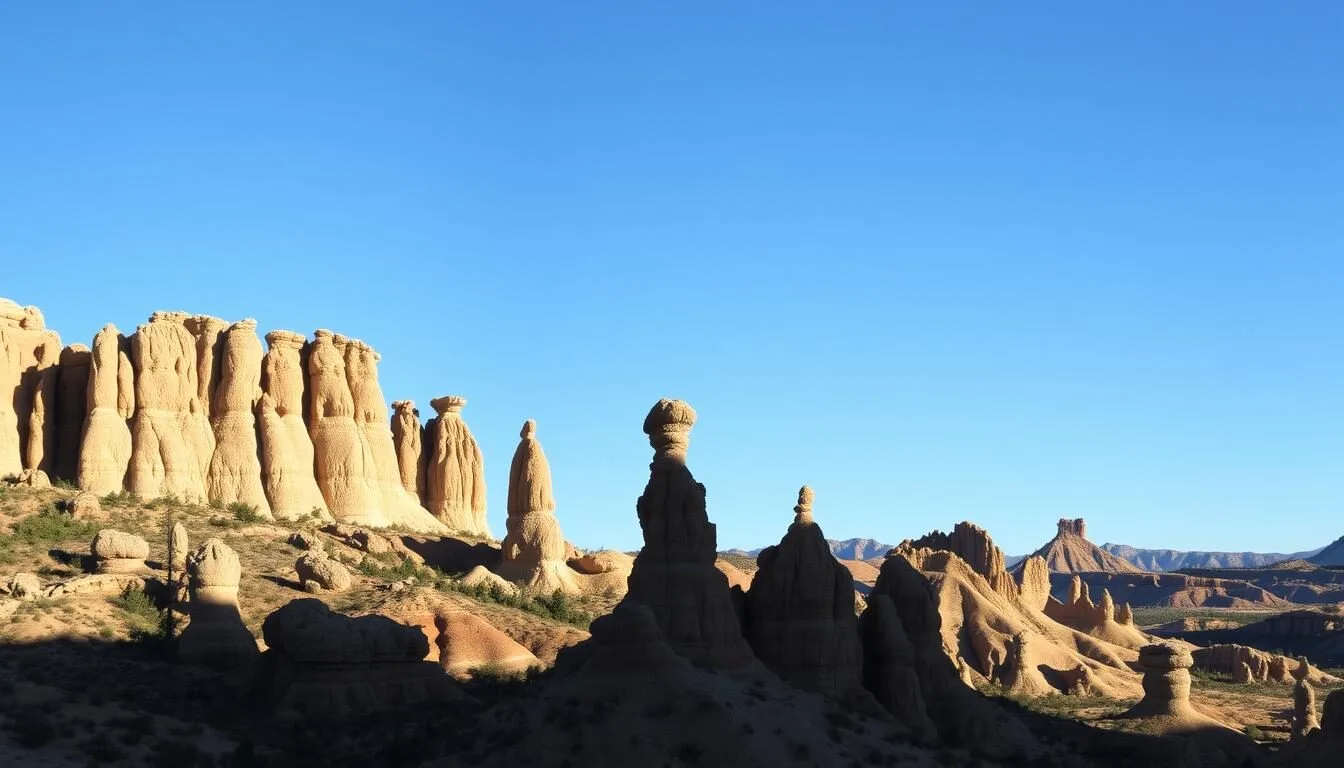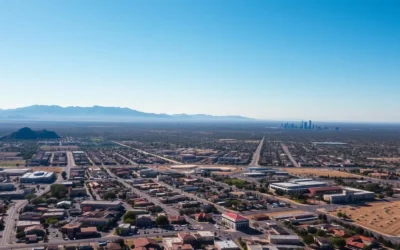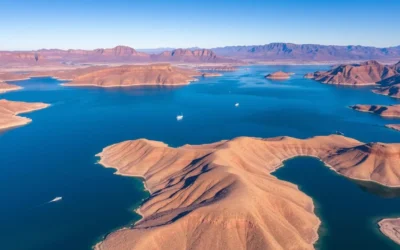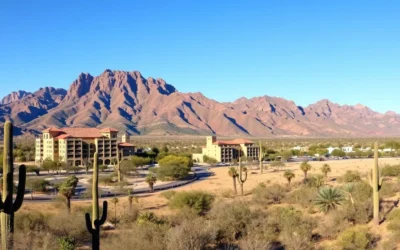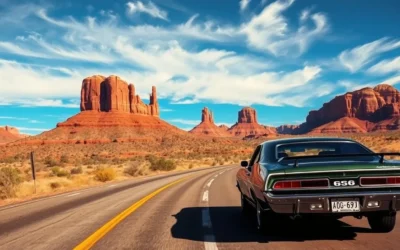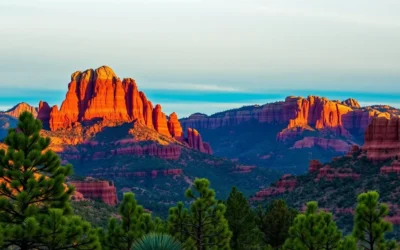✓ Accommodations✓ Flights✓ Rental Cars
Imagine a landscape of surreal rock formations, reminiscent of another world, where hoodoos rise above the treetops like sentinels. This is Chiricahua National Monument, a lesser-known treasure in southeastern Arizona. With only about 60,000 visitors annually, it offers a serene escape from the crowds often found in more popular national parks.
You can explore the remains of an ancient lava flow, hike among the unique rhyolite hoodoos, and enjoy the diverse wildlife, including coatis, deer, and javelinas. As Congress considers making it the next national park, now is the perfect time to experience this natural wonderland before it potentially attracts larger crowds.
With its distinct seasons and elevations ranging from 5,000 to 7,000 feet, Chiricahua offers a different experience throughout the year, making it an ideal destination for both day trips and camping adventures.
Discovering the Wonderland of Rocks
The Wonderland of Rocks at Chiricahua National Monument is a marvel of geological formations, shaped by time and nature’s forces. This unique landscape was formed through a dramatic volcanic eruption 27 million years ago, covering the area in ash and lava.
The Geological Marvel of Chiricahua
Over millennia, wind and rain eroded the hardened volcanic ash into stunning rhyolite hoodoos, balanced rocks, and spires, creating an otherworldly landscape. The monument protects these fantastic formations as well as the historic Faraway Ranch.
Location and Getting There
Located in the Chiricahua Mountains, the monument is accessible via a 2-hour drive from Tucson or about 3.5 hours from Phoenix. To get there, take I-10 West for 80 miles, then AZ-186 East for 30 miles, and finally AZ-181 East for 3 miles.
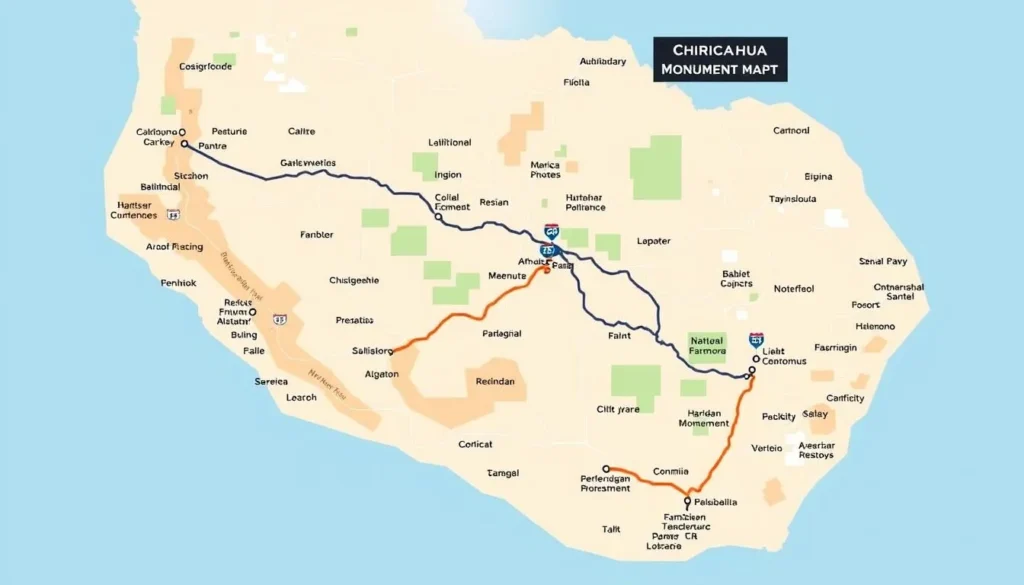
Best Time to Visit Chiricahua National Monument
Chiricahua National Monument is a year-round destination, but the experience varies greatly with the seasons. Understanding the seasonal variations will help you plan your trip accordingly.
Seasonal Considerations
The ideal times to visit Chiricahua National Monument are early spring (March-May) and late fall (September-November), when temperatures are mild and perfect for hiking the monument’s trails. In contrast, summer months bring extreme heat, while winters can be cold, especially at higher elevations.
Weather Patterns and What to Pack
When visiting Chiricahua National, be prepared for the weather. In the summer, bring plenty of water and sun protection, as temperatures often exceed 100°F. In the winter, pack warm clothing, as it can be cold with ice and snow at higher elevations. The monument’s elevation, ranging from 5,000 to 7,000 feet, requires your body to adjust to thinner air if you’re coming from lower elevations. 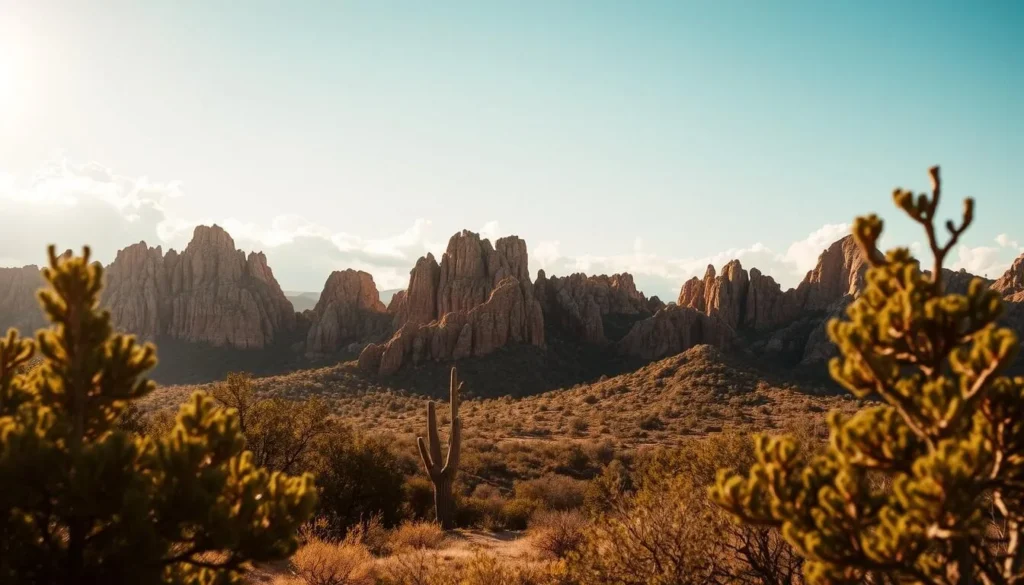 Consider packing layers, and don’t forget to bring appropriate hiking gear and snacks.
Consider packing layers, and don’t forget to bring appropriate hiking gear and snacks.
- Plan your trip during the mild seasons for the best hiking experience.
- Make sure to stay hydrated, especially during the hot summer months.
Chiricahua National Monument, Arizona: Best Things to Do – Top Picks
As you explore Chiricahua National Monument, you’ll discover a plethora of exciting activities to make your trip unforgettable.
Bonita Canyon Scenic Drive
The 8-mile Bonita Canyon Scenic Drive is a must-do experience, offering breathtaking views of the monument’s unique rock formations. As you drive, you’ll climb nearly 2,000 feet in elevation, providing changing perspectives of the hoodoos and spires.

Exploring Faraway Ranch Historic District
Faraway Ranch is a historic gem within the monument, showcasing pioneer life in the late 1800s. Take a ranger-led tour to learn about the Erickson family’s journey and their development of the property into a guest ranch.
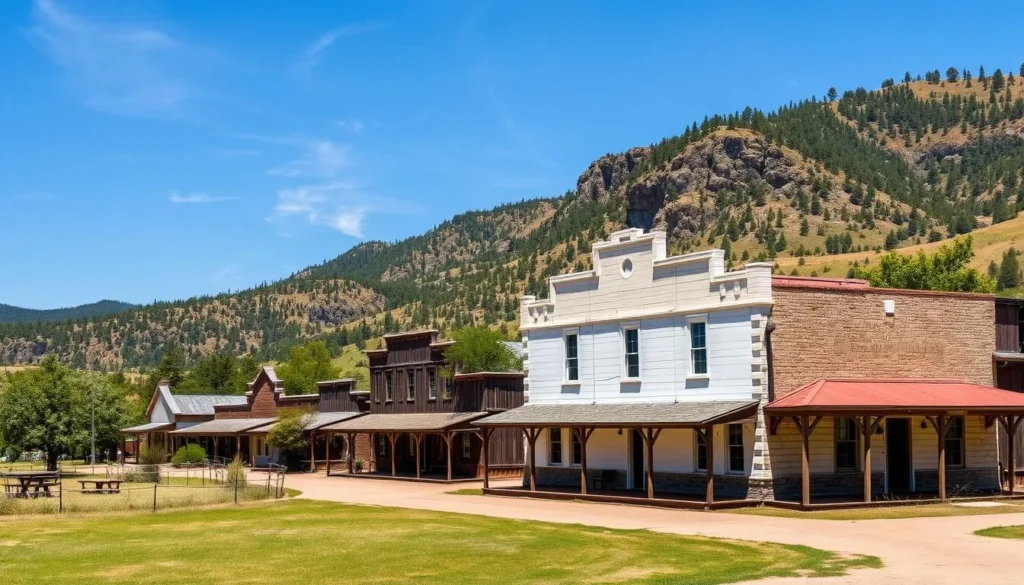
Wildlife Viewing Opportunities
Chiricahua National Monument is a haven for wildlife enthusiasts. Keep an eye out for coatis, deer, and numerous bird species, especially near the Visitor Center and along the Silver Spur Meadow Trail.
Massai Point Overlook
The Massai Point Overlook, at the end of the Bonita Canyon Scenic Drive, offers 360-degree views of the monument’s stunning landscape. It’s the perfect spot to watch the sunset over the Sulphur Springs Valley.
Image of Massai Point Overlook
Must-Do Hiking Trails in Chiricahua
With its unique rock formations, Chiricahua National Monument offers some of the most spectacular hiking trails in the country. The monument’s diverse trails cater to all kinds of hikers, from beginners to seasoned explorers.
Echo Canyon Loop Trail
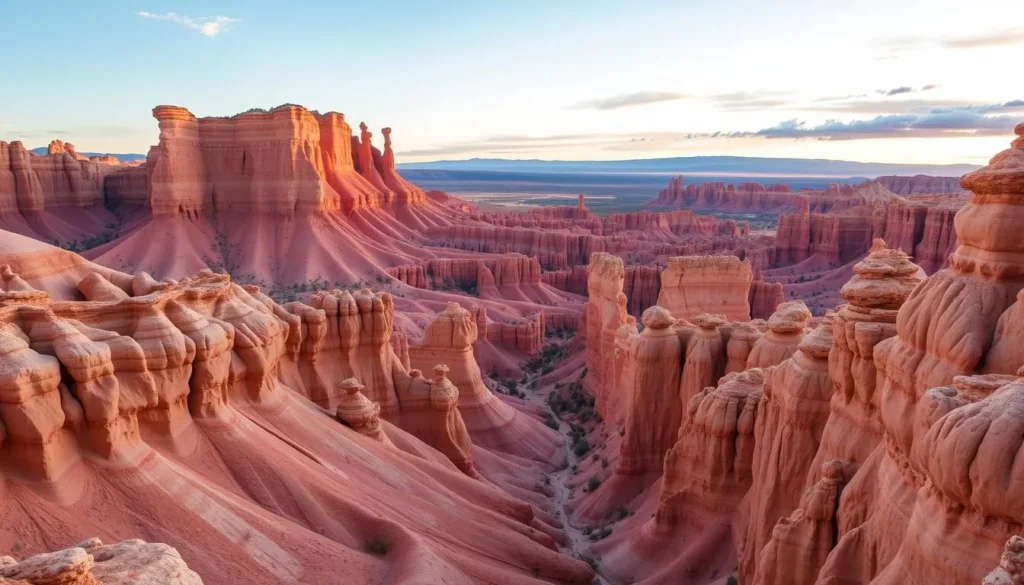
The Echo Canyon Loop Trail is a 3.2-mile loop that takes you through a wonderland of hoodoos and rock formations. With 550 feet of elevation gain, this moderate trail is perfect for those looking to experience the best of Chiricahua. Hike counterclockwise to enjoy spectacular panoramic views early in your journey.
Heart of Rocks Loop
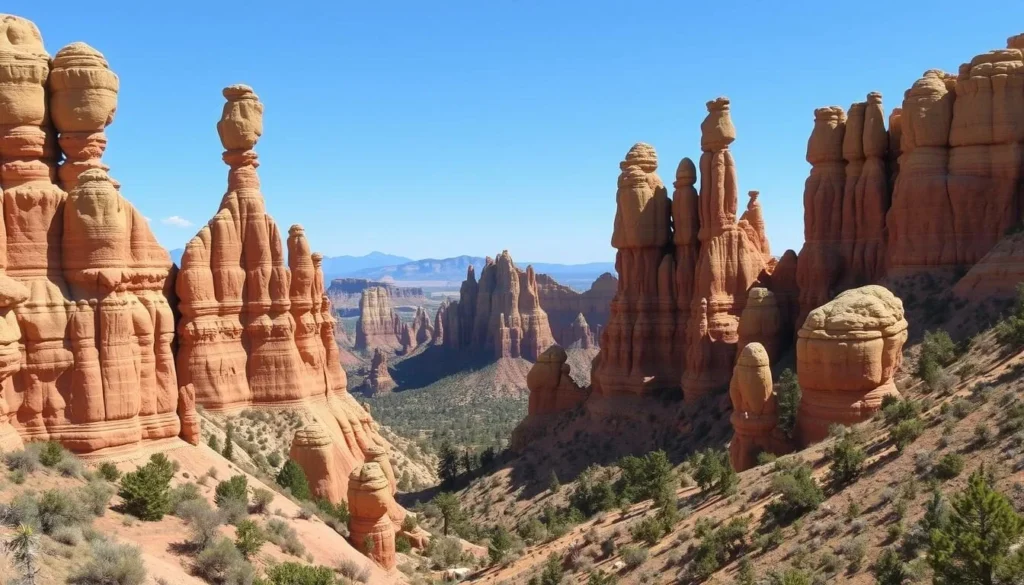
For a more challenging experience, consider the “Big Loop” hike, which includes the Heart of Rocks Loop. This 9.5-mile strenuous hike rewards you with up-close encounters with uniquely shaped formations like “Duck on a Rock” and “Thor’s Hammer.”
Easy Trails for Families and Beginners
If you’re short on time or prefer a more leisurely hike, consider the Massai Point Nature Trail, a 0.5-mile easy trail with interpretive signs and panoramic views. Alternatively, the Echo Canyon Grottoes Trail is a quick and easy 1-mile round-trip hike that gives you a taste of the monument’s unique geology.
Practical Tips for Your Visit
As you plan your trip to Chiricahua National Monument, keep in mind these practical tips to make the most of your visit. First, be aware that there is no entrance fee, making it an accessible destination for all. However, if you have an America the Beautiful pass, you can receive a discount on camping at Bonita Canyon Campground, the only campsite within the monument.
Essential Preparations: Pack plenty of water and sunscreen, as the Arizona sun can be intense. Check the weather forecast, especially during monsoon season from early June to early Fall, to avoid potential flash flooding. Utilize the visitor center for up-to-date information on trail conditions and wildlife sightings.
For a smooth trip, note that vehicles longer than 24 feet are not permitted past the visitor center on Bonita Canyon Drive. Pets are allowed in certain areas, including the Silver Spur Trail and Faraway Ranch Trail, but must be kept on a leash. By following these guidelines and the Leave No Trace principles, you’ll help preserve this natural wonder for future generations.
The above is subject to change.
Check back often to TRAVEL.COM for the latest travel tips and deals.
